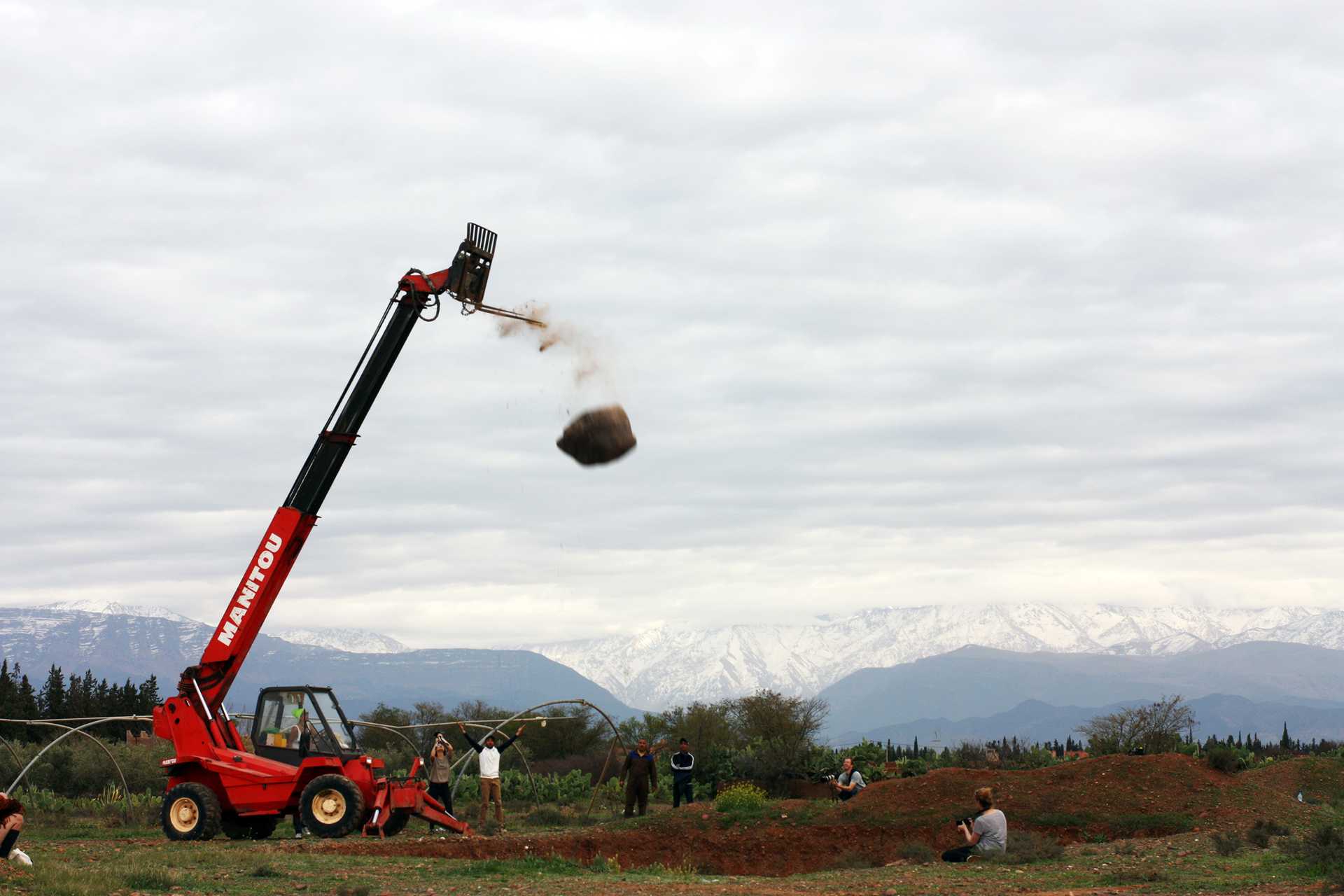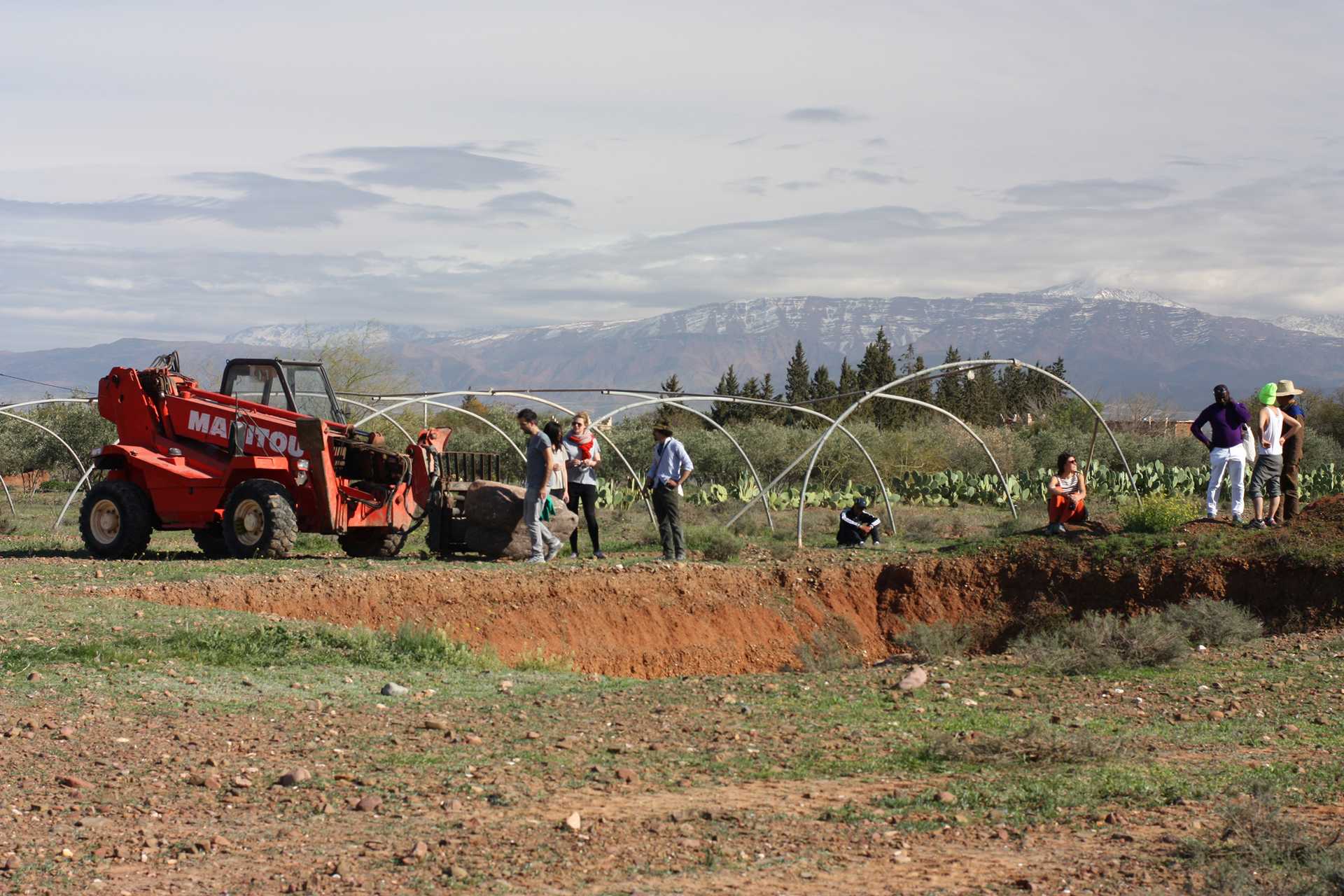Atlas, 2014
In her telling action orientated narrative, a massive stone (1,5m x 1,5m) from the Atlas Mountains is pulled up with a crane up right till about 20 meter height. Then it is dropped from approximately 17 meters high, where due to gravity, it falls down and smashes on the ground in a hole. „Thus I try to create a synthesis with my performance between old mythologies portrayed in a modern technical form – the crane as the modern form and the stones as historical mythologies of cultural memory. The stones originating from the Atlas Mountains mirror a dual symbolism. On the one hand the Atlas is the first vertebra of the neck, which carries the head and is a component of the neck, forming thus one of the most crucial elements of our supporting apparatus. A neck break is often fatal and can result in total paralysis of the upper and lower limbs as well impairing vital organ functionality. If one were to approach the “neck break” of cultural memory figuratively as embodied in the stone here, it is impossible to transform learning from past experiences for acts into the future. If one extinguishes past experiences by erasing all memory of them, then no reflection or transformative change, both in the present or future can take place. Thus the historical path would be interrupted and thousands of years of accumulated wealth laced with cultural experience irrevocably lost. The ominous threat of a cultural neck break is delicately balanced against another historical myth, as the stones are aptly named after the Greek Titan Atlas. Atlas participated in the revolt of the Titans against Zeus and was defeated. As punishment, he was destined to undertake the cumbersome task of supporting the sky, carrying the immense weight of the world on his shoulders. So, too does cultural memory have the cumbersome task of absorbing and echoing the historical development of our cultural history not only to itself, but also to future civilizations looking to the past for the truth. Arguably the future of civilization, depends on our consciousness of cultural properties as a wealth of experience with which to forge new paths into the future.”
Atlas (2014) Material: rock from Atlas Mountains, crane Dimension: site specific Photo credit: Anneli von Klitzing Commissioned for If You Are So Smart, Why Ain’t you Rich?, curated by Pauline Doutreluingne and Bonaventure Soh Bejeng Ndikung, in the context of the Marrakech Biennale 2014


